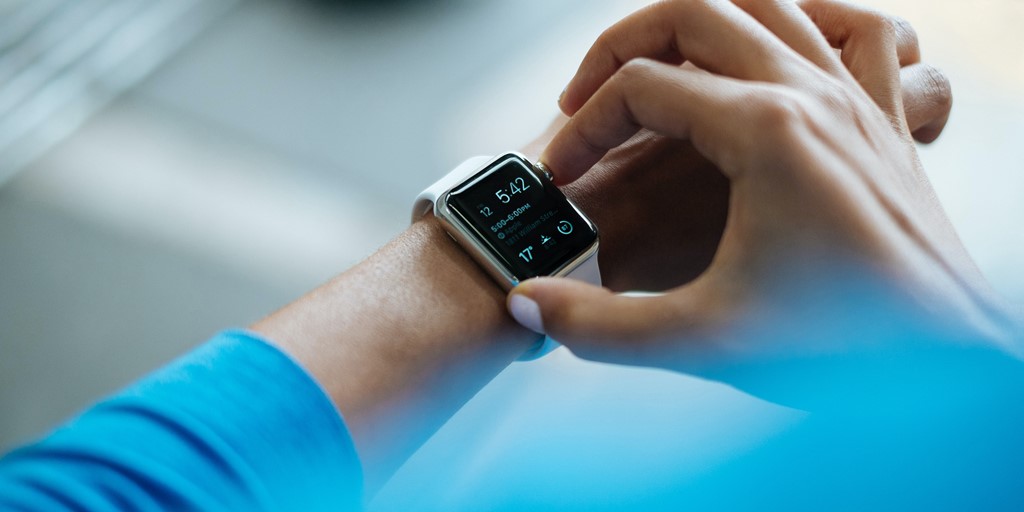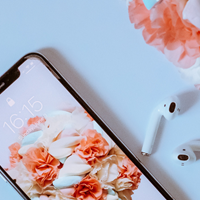The Internet of Things is undoubtedly transforming the healthcare industry by changing the doctor-patient interaction to deliver healthcare solutions.
Luckily, the speedy technological advancements of the IoT allow for patient-doctor interactions to evolve into real-time communication and monitoring, as opposed to just occasional visits and phone calls. These devices have also helped countless patients suffering from diabetes, and asthma, or helping women track their pregnancies. In this article, we are going to dive into some of the examples of how this technology can be a life-saving solution and how exactly it works.
What is loT, and how does IoT work?
The Internet of Things (IoT) is a computer process in which a number of devices are connected with sensors, microcontrollers, and transceivers to enable communication regarding their use and surroundings. The sensors incorporated in all physical devices are used throughout the process in order to collect data and send it to a corresponding application or another device.
For example, it may be a smart TV connected to your phone, a washing machine program, which can be monitored through an app, air conditioning, or almost everything you come into touch with on a daily basis, including traffic lights! IoT solutions continually communicate data about the condition of devices and incorporate the information acquired through sensors. This technique allows a user to receive real-time reporting on the equipment’s activity.
Similar technology can be used in order to transform the healthcare industry with the vast amount of data that medical devices generate. This data is a goldmine for healthcare stakeholders to improve patients’ health and experiences in a holistic way, and potentially detect other sources of illnesses.
What are some examples of IoT in healthcare?
1. Monitoring glucose levels
Monitoring glucose is a challenging task that is detrimental to the well-being of diabetic patients. When levels fluctuate dramatically, periodic testing may be insufficient to detect problems. However, IoT devices can help alleviate these difficulties by offering continuous, automatic glucose monitoring for patients.
A glucose sensor is a sensor that measures the level of glucose in a patient's blood. It performs the same purpose as a continuous glucose monitoring system (CGM), which can be either an external sensor implanted on the skin or an internal sensor injected beneath the skin.
The Node MCU sends the data acquired by the glucose sensor to the cloud, where it is presented on the mobile app. Patients can receive alerts when glucose levels are abnormal when using glucose monitoring devices, eliminating manual record keeping.
The data is also evaluated and processed in the server by machine learning techniques. It is critical to maintain patient information since it may be needed in the future. In an emergency, doctors also have access to these results and can provide an immediate diagnosis for their patients.
2. Monitoring blood pressure and heart rate
Another example that can be crucial for many medical conditions is monitoring blood pressure and heart rate. For instance, IoT is used in optical devices called Photoplethysmograms, to detect changes in blood volume (PPG).
They can be found as pulse oximeters in many parts of the body, including the index fingers, ears, and other skin locations. A company like Valencell has developed a PPG sensor for the consumer market that can be put into practically any wearable device.
These IoT devices can be tuned to remind you about doing measurements, exercise checks, appointments, blood pressure or heart rate variations, and much more. They are designed for monitoring, allowing patients to walk around freely while their hearts are continually checked. Furthermore, these technologies are being systematically developed in order to deliver better and more accurate findings.
3. Stroke and asthma prevention sensors
An electromyography (EMG) sensor, which detects muscle movement, assists in rehabilitating prosthesis patients and stroke patients. EMG sensors aid in self-monitoring and muscular strengthening by detecting the activity associated with muscle contractions.
These sensors, in addition to assessing nerve conduction and muscle activation in wounded tissues, are wireless and non-invasive. Intelligent Asthma Monitoring wearable technology can predict upcoming asthma attacks before the patient using the gadget ever experiences the symptoms.
A patient can try to avoid an attack using this method. Furthermore, if the patient lives alone, their emergency contacts will be notified in advance of an attack.
4. Wearables
Wearables in healthcare are electronic devices that customers may wear, such as Fitbits and smartwatches, that are meant to collect health and activity data from users. It encourages behavior that lowers hospital visits and readmissions due to poor personal health care. Notifications are sent to wearable devices based on user behavior.
Such notifications can be issued when, for example, a certain user's temperature rises dramatically. This is especially significant for patients and their families who require consistent medical care. Users will receive notifications for every fluctuation when the wearable is connected to their smartphone. Users will receive notifications for every fluctuation when the wearable is connected to their smartphone.
You can also measure and enhance your sleep with wearable gadgets. It can monitor sleep, breathing, humidity, and room temperature. The app allows you to define sleep time objectives, and suggest ways to achieve those goals.
Core benefits of implementing IoT in healthcare devices
Improved control and real-time monitoring
Remote monitoring in the healthcare industry has become feasible thanks to Internet of Things-enabled gadgets, unlocking the potential to keep patients safe and healthy while also allowing doctors to provide exceptional care. Doctors may maintain track of their patients' health more effectively and in real-time by employing monitoring devices connected with IoT.
The most typical application of IoT devices in healthcare is remote patient monitoring. Smart bracelets for the elderly, for example, can monitor their health and warn doctors if anything is out of the norm. Such data created by IoT devices not only aids in better decision-making but also ensures that healthcare operations run smoothly with fewer errors, waste, and system expenses.
Increased safety for people who require full-time assistance
IoT has revolutionized people's life, notably the patients who require full-time assistance due to their age or condition. They can now track their everyday activities remotely, in case a care taker cannot be there at all times. This affects those who live alone as well as their families.
The alarm system notifies the emergency contacts or a doctor when a person's usual activities are disrupted or altered. In an emergency, doctors can even dispatch an ambulance to a patient's location and provide personnel with information regarding the patient's medical status.
Personal experience and more accurate diagnosis
IoT has also increased patient engagement and satisfaction as interactions with doctors have become more accessible, frequent, and personal. Also, data collected from IoT devices can help physicians diagnose diseases at an early stage or even before the illness develops based on a holistic, long-term monitoring of the patient’s symptoms, as opposed to only examining their symptoms during one visit. As a result, doctors have time for a more in-depth analysis of the patient’s condition, leading to a more accurate diagnosis.
IoT is an essential tool for companies who want to be competitive and more effective in the healthcare industry. The capabilities of the Internet of Things can provide an enhanced and more personalized experience for doctors and patients.If you are looking to start your own business in the IoT sector, the first step is finding the right software provider, who is going to assist you every step of the way and make sure that the technology is tailored to your needs.










 Angry Nerds (Poland)
Angry Nerds (Poland) Angry Nerds (USA)
Angry Nerds (USA) Angry Nerds (Canada)
Angry Nerds (Canada)



